James Fenimore Cooper (1789-1851), American novelist best known for The Last of the Mohicans (1826), grew up in Cooperstown, a town that his father, a merchant and land speculator turned wealthy landowner and politician, had founded several years after the American Revolutionary War on land expropriated from the Mohawk, one of the allied tribes of the British during the conflict. Cooper entered Yale University, but was expelled for misdeeds such as locking a donkey in a prayer room and blowing up a roommate's door. After serving several years in the US Navy and Merchant Marine, he inherited his father's fortune and was able to pursue his passion, writing. Over three decades he wrote novels, travel books, biographies and works of a political nature.
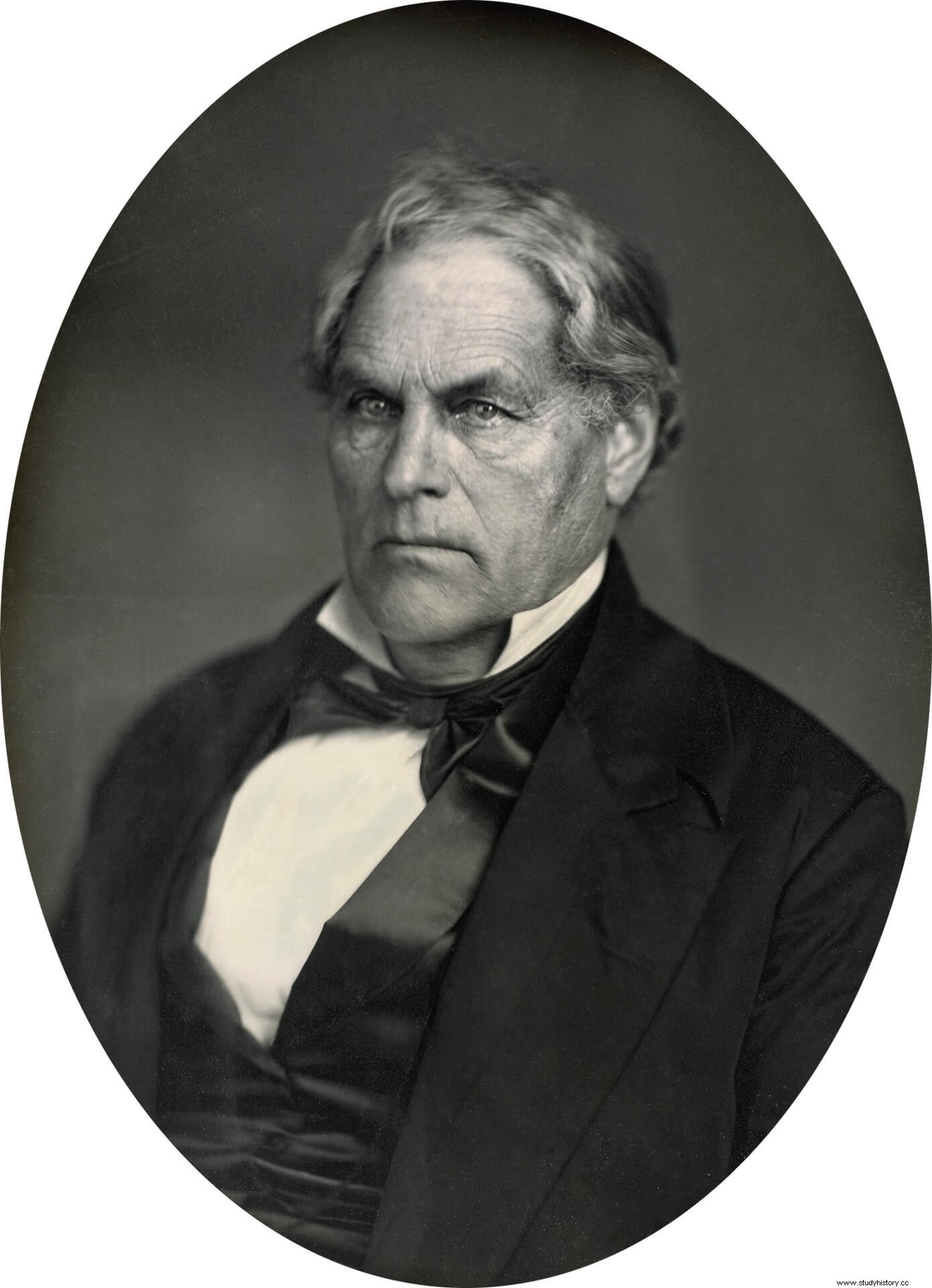
The origin of the legend of The Last of the Mohicans
Cooper's most famous work, without a doubt, is The Last of the Mohicans (1826), made into a film half a dozen times, the last one in 1992 by Michael Mann with Daniel Day-Lewis and Madeleine Stowe as protagonists, and an unforgettable soundtrack by Trevor Jones, Randy Edelman, Daniel Lanois. Set in the Franco-Indian War (1754-1763), which pitted the United Kingdom and France, along with their colonies and native allies, for hegemony in North America, the backdrop to the epic tale is some very specific events:the siege and the fall of the British fort of William Henry , in August 1757, and the subsequent massacre. Cooper's story has distorted, over time, historical reality and popular visions and perceptions of events. Beyond the colorful romantic depiction of The Last of the Mohicans , with heroes and villains, reveals a complex story with multiple nuances, but documented through numerous testimonies.
The construction of Fort William Henry –named after the Duke of Gloucester, son of the Prince of Wales and grandson of George II of the United Kingdom– was the consequence of the campaign that led out in 1755 General William Johnson to try to seize Fort Saint-Frédéric. This position, vital to the defense of Canada, occupied a strategic location on a peninsula of Lake Champlain. While Johnson did not get that far with his force of some fifteen hundred provincial soldiers and two hundred native allies, he did at least pave the way for a future campaign by building two forts on the Lake Champlain route:Fort Edward, on the banks of the Hudson River, and William Henry, on the banks of Lake George .
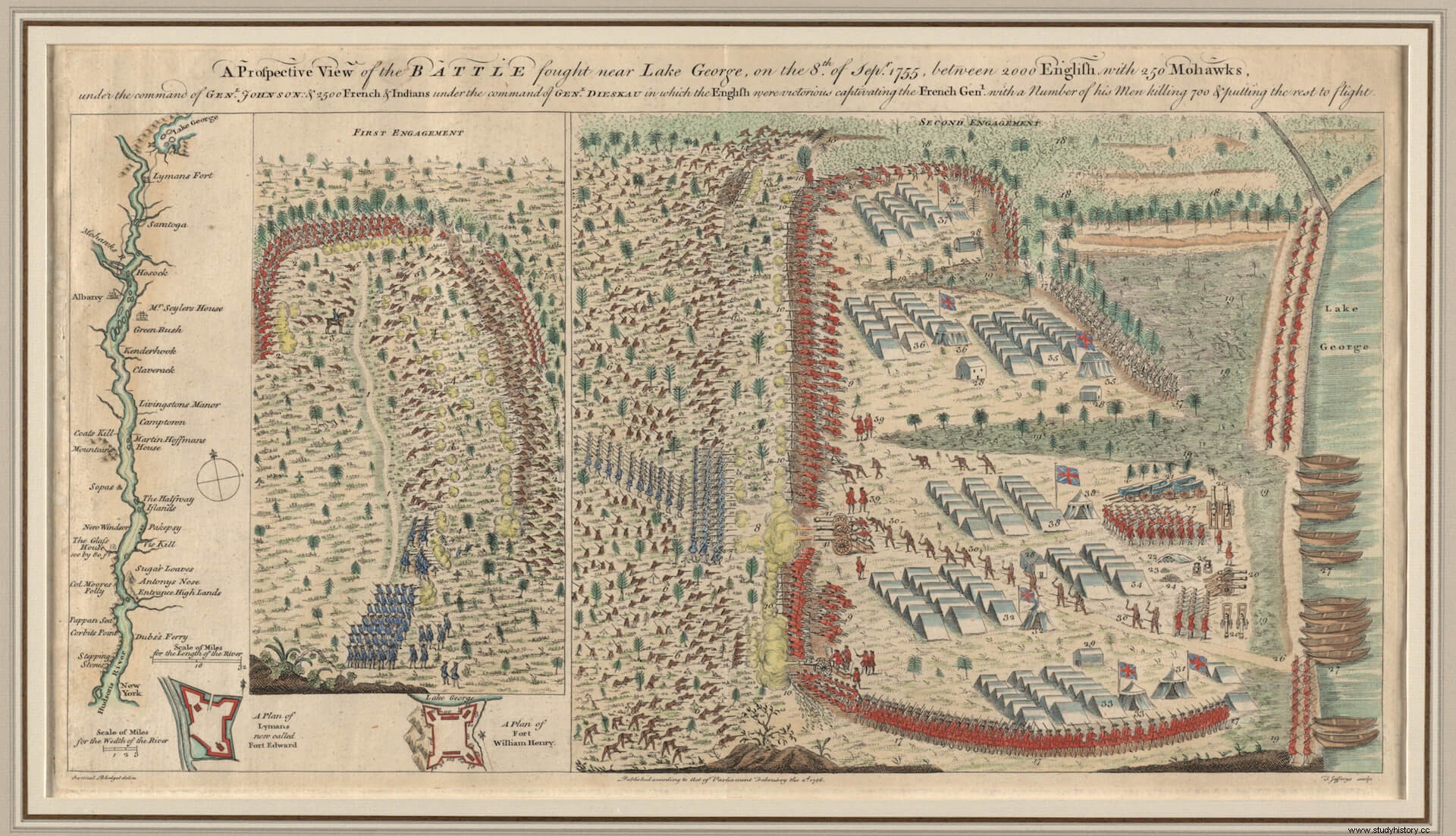
Before laying the foundations of the second and most famous strong, Johnson had to fight against a Franco-Indian force under the command of the Baron de Dieskau. An engraving published in London the following year by the lumber merchant, farmer, industrialist and inventor Samuel Blodget (1724-1807), perfectly illustrates the sequence of the battle and, ultimately, the way in which both sides used to fight. An excerpt from General Johnson's account of the crash may accompany the stamp:
Losses were heavy on both sides, but the Franco-Indian assault failed and General Johnson was able to build his own fort. Of the Indian allies of the British, only a few fought alongside them, and most later returned to their homes. Among the most faithful to the British crown were those who had established links with European settlers, such as the Mohicans , many of whom had deep friendships with the missionaries of the Moravian Brotherhood, a church of Hussite origin with a presence in North America.
The Native Heroes of The Last of the Mohicans , Chief Chingachgook and his son Uncas, are fictional characters, but there were some brave Indians who fought alongside the British in reality, such as Theyanoguin, a Mohawk chief named Hendrick who died at the Battle of Lake George, pierced by a French bayonet. Cooper chose a curious mixture of names for his protagonists, since Chingachgook is a name in the Lenape language, the language spoken by the Delaware ethnic group. Uncas is not Mohican either, but rather Mohegan – the language of a homonymous tribe neighboring the Mohicans. In the 17th century, a sachem (Supreme Chief) of this town, called Uncas, made the tribe the most powerful in the Connecticut region through an alliance with the English.
Stressed relationships
Early in 1757, after the French had taken Fort Oswego the previous August, virtually eliminating the British presence on Lake Ontario, the Gallic command decided to neutralize the threat from Fort William Henry. A coup de mano was first attempted in March, but failed due to bad weather, despite which the attackers burned most of the canoes the British had built. After that, the governor of New France, Vaudreuil, gathered in Montreal the chiefs of the allied tribes. As the warriors were placed in the service of General Montcalm, they moved towards Fort Carillon, the outpost that became the base of the offensive.
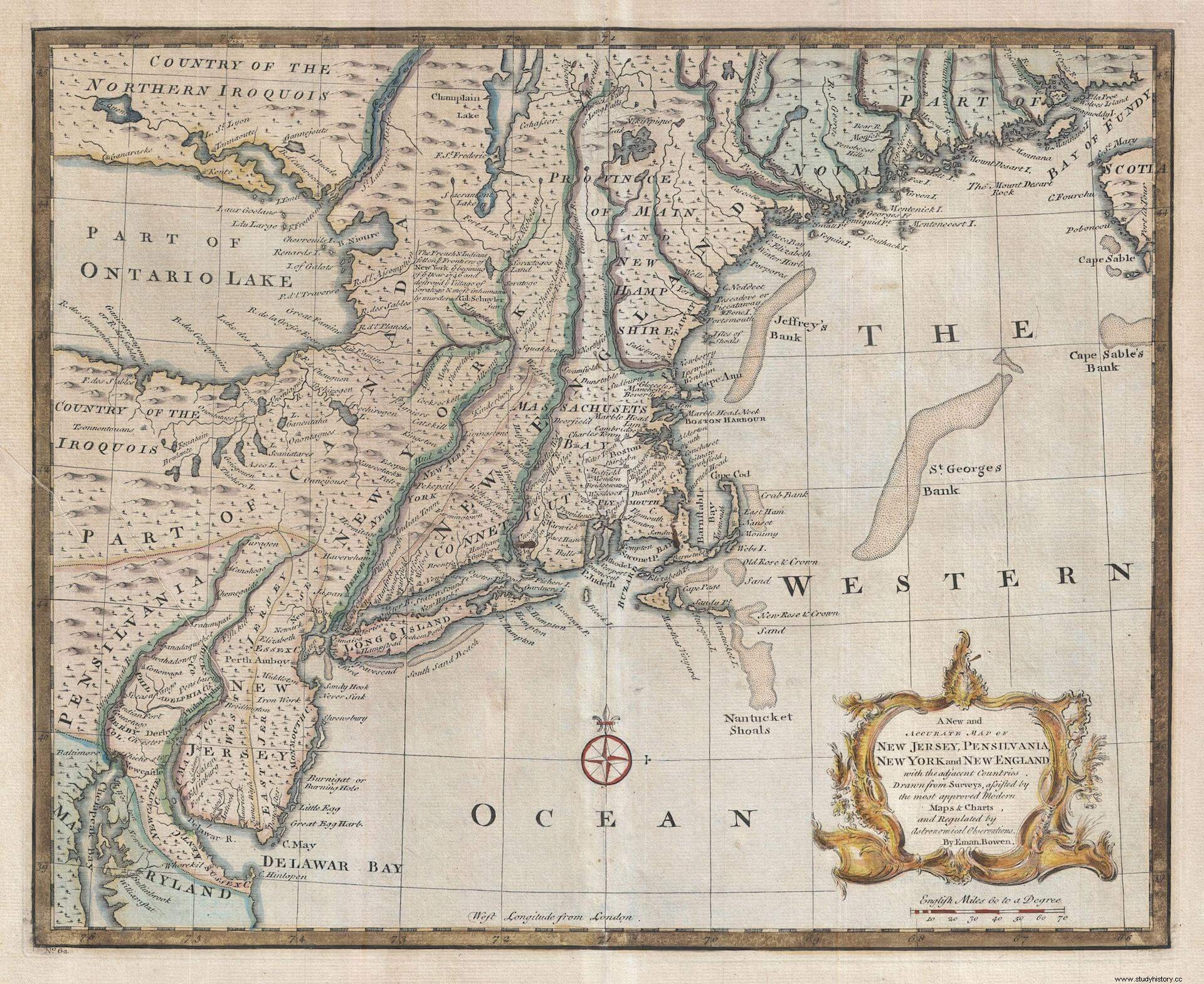
Montcalm was able to dispose of a very large army, formed by 8,019 troops, of which 2,570 were regular troops of the metropolis; 524, colonial regulars of the troupes de la marine; 3470, Canadian militiamen; 180, gunners, engineers and sappers; and 1799, warriors from more than thirty indigenous peoples. The role of these natives was crucial, since their raids, coupled with the panic they caused among the British soldiers, dissuaded William Henry's commander, Scottish Lieutenant Colonel George Monro – father of Cora and Alice, fictional female protagonists of The Last of the Mohicans – of risking their troops on reconnaissance patrols, from which they had a good chance of not returning, especially after, on July 23, the French and Indians destroyed a force of three hundred and fifty provincial soldiers at Sabbath Day Point, 32 km north of the fort.
Relationships between the French and Native Americans were fluid. Despite the diversity of ethnic groups and groups, these were broadly divided into two groups, the domiciled, indigenous people who lived in the Catholic missions of Canada, and the Indians of the Pays d'en Haut – the area corresponding to the Great Lagos—whose ties to the French were much less close. Montcalm had to confer with the heads of all of them to get them to agree and convince them to obey his orders. Residents felt great respect for the general. At their council on July 27, 1757, at Carillon, shortly before setting off for William Henry, Kisensik, the chief of the Nipissing of the Lac des Deux Montagnes, praised Montcalm before the other chiefs:"Our joy it must be greater than yours, father, you who have crossed the great lake, not for your own sake; because it is not his cause that he has come to defend, but it is the great King who has told him:Go, go by the great lake to defend my children.
Controlling the natives of the Pays d’en Haut was much more complicated, although each tribe or group had French officers and interpreters attached, and sometimes even missionaries. Montcalm was unable to prevent any cases of cannibalism in the days leading up to the march, although sources differ widely on the details. While the English asserted that some Indians cooked a prisoner alive in a cauldron and devoured him, Montcalm's deputy, the Chevalier de Lévis, wrote that it was a corpse that floated into their camp that the Indians cooked, and he took care. to distinguish:“it is none other than the d'en Haut who commit such cruelties; our domiciled did not take any part and confessed throughout the day. The night before the departure, likewise, the Miamis left without notifying anyone, and the Mississaugas and Odawas soon followed. Although they did not exceed two hundred, such isolated acts presaged that some misfortune might occur. The Hurons, the tribe to which the villain of The Last of the Mohicans belongs , Magua –instigator of the subsequent massacre, in the novel–, were actually a small group of domiciled Indians who had sought refuge in Canada in the 17th century after suffering a genocide at the hands of the Iroquois.
The Siege of the Fort
Meanwhile, prospects at William Henry were bleak. Monro, who had only about 1,500 men distributed between the fort and a neighboring fortified camp, had insistently asked his superior officer, General Daniel Webb, based at Fort Edward, 26 km south of Monro, for help. WilliamHenry. Webb surveyed Monro's position between July 26 and 29 and decided to send him 200 regulars and 800 militiamen, leaving him with barely 1,600 troops in his base. The failures of British intelligence had been resounding. Just a month ago, General Loudoun, the British commander-in-chief in North America, had notified Webb:“There will be nothing to oppose you at Ticonderoga [Carillon] or Crown Point [Saint-Fréderic], except the garrisons and, I imagine, very few more for the patrols.”
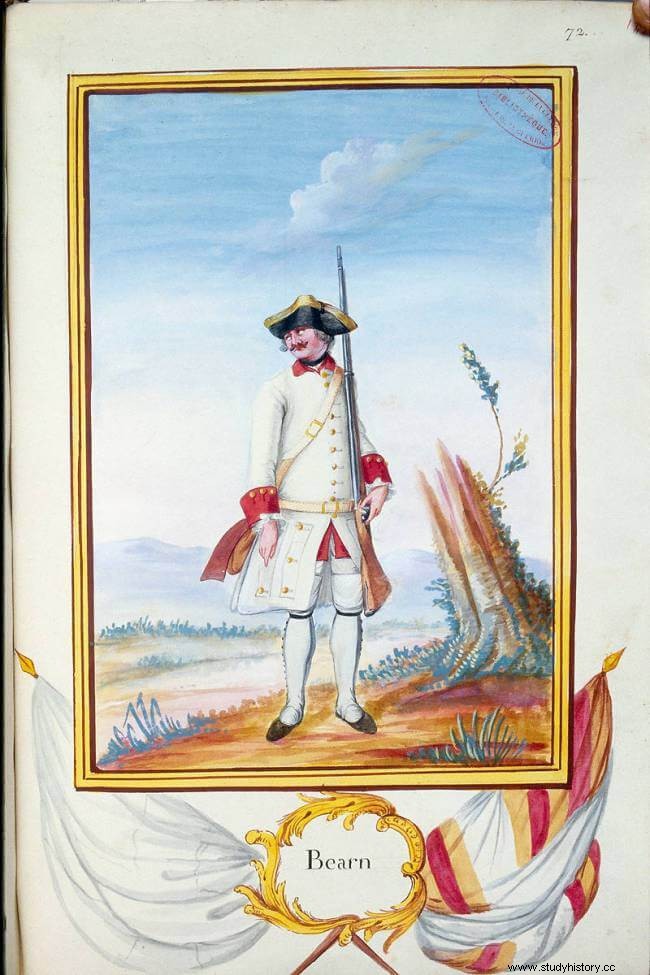
The scene that represented a testimony, Jonathan Carver, of Burke's Rangers, who arrived with the reinforcements sent by Webb, could not be more different:"The day after our arrival we saw Lake George, which is next to the fort, covered by an infinite number of boats." Given the disparity of forces and the impossibility of Webb arriving with relief, the siege could only end with the surrender of the square. Monro, however, did not intend to simply lower the flag. During the six days that the siege lasted, skirmishes and artillery duels were constant. The second day, August 4, according to Captain Thomas Lloyd:
The French trenches, despite the resistance of the defenders, continued to advance, and on the 7th a battery of two 18-pounder guns, five 12-pounders, one of 8, two 7-inch howitzers and a 6-inch mortar. Devastating fire was then unleashed on the fort. There was no place to be completely safe. According to Lloyd:"A bomb fell among our officers while they were eating dinner, but it did no damage other than spoiling the dinner." However, the approach of the trenches, the spread of a smallpox epidemic among the defenders, and the fact that many of the fort's cannons were rendered useless by continued use were decisive. On the 9th Monro capitulated in exchange for leaving William Henry with the honors of war and a French escort to Fort Edward.
The massacre
The cornerstone of the drama and story that gave rise to The Last of the Mohicans It was, of course, the massacre that occurred the day after the surrender, when the native allies of the French fell on the retreating British column. It is difficult, even today, to separate myth from reality and determine what part of the testimonials is true and what part is exaggeration. What is certain is that the version that reflects the film adaptation of The Last of the Mohicans It does not fit the concordant points in the different versions, since, far from engaging in combat, the British soldiers, although they kept their rifles, had left the gunpowder and the bullets in compliance with the terms of the surrender. Everything points to the fact that it was not a premeditated massacre, but that the violence escalated as the Indians tried to arrest or rob the soldiers.
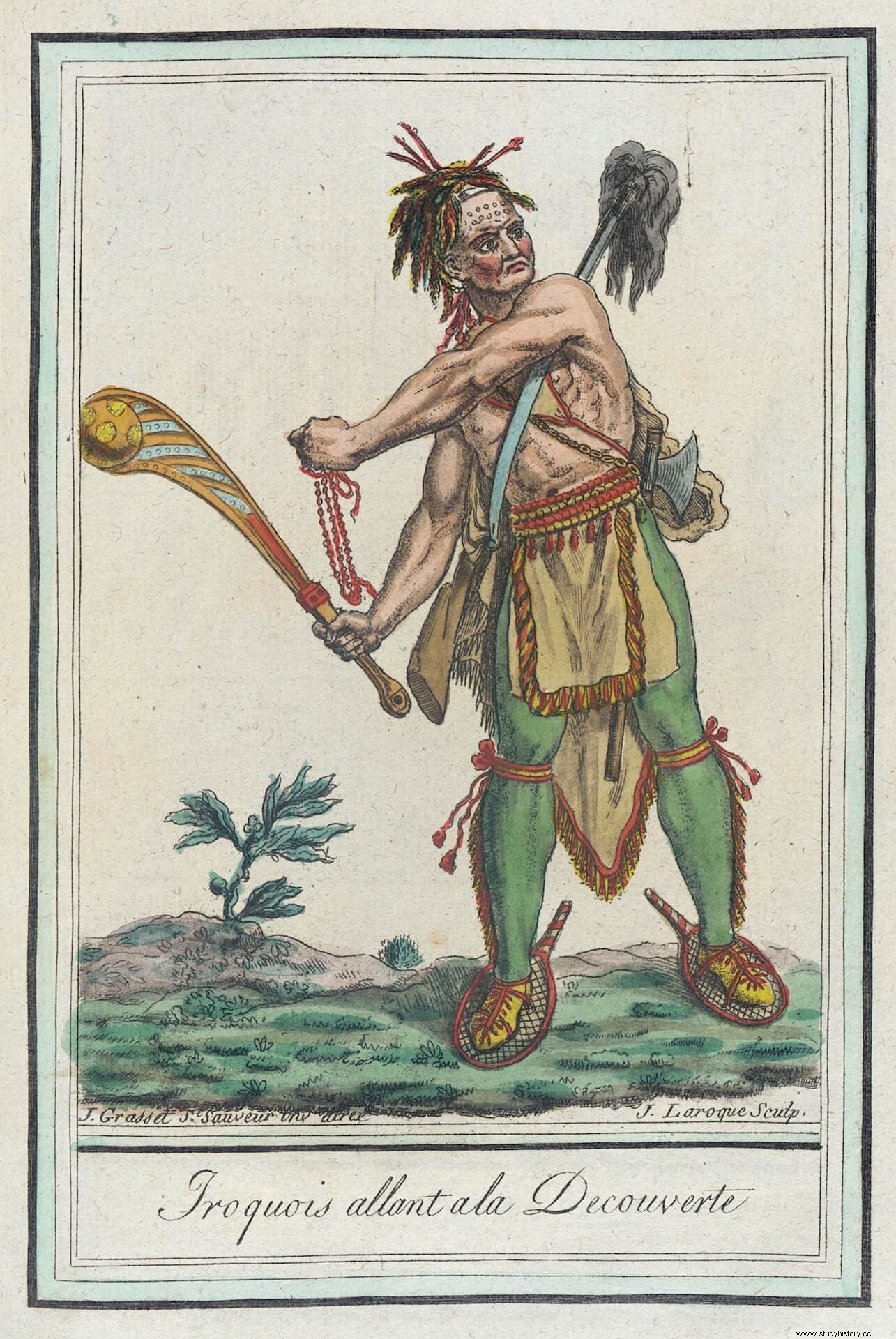
Jonathan Carver describes in his story an orgy of blood and accuses the French officers of watching the scene impassively:“An unprejudiced observer […] would be inclined to conclude that a body of 10,000 Christian soldiers, very Christian, could prevent the massacre from becoming so general.” Carver's testimony, which ended up naked and beaten, was widely publicized and helped cement many of the prejudices about the massacre, especially in relation to the number of dead (Carver estimated at about fifteen hundred dead and captives, without distinction) and the presumed indifference of the French. The lengthy account of a French Jesuit attached to the Indians offers an alternative point of view on both counts:“The massacre […] was not lasting, nor as considerable as such fury seemed to make one fear; it only amounted to forty or fifty men.” As for the Gallic paper, the missionary highlights the efforts of Lévis and his officers to stop the massacre and asks a question:“What use could four hundred men have against some fifteen hundred furious savages, who did not distinguish us from the enemy?”.
Who surely did not perish in the massacre, as it happens in The Last of the Mohicans It was Monroe. Although Cooper gives him a heroic death, he was not actually there to defend the men from him and died three months later of a stroke in Albany. The number of victims was considerably lower than has long been assumed. The captives, however, were numerous. Montcalm, through the missionaries, managed to rescue many in exchange for brandy, weapons and clothing, but not a few died in captivity. It was, without a doubt, a dramatic event that still survived in the collective memory when, in 1825, James Fenimore Cooper, during an excursion through the Adirondack Mountains, conceived the idea of transferring them to a fictionalized format and immortalizing them in The Last of the Mohicans .
